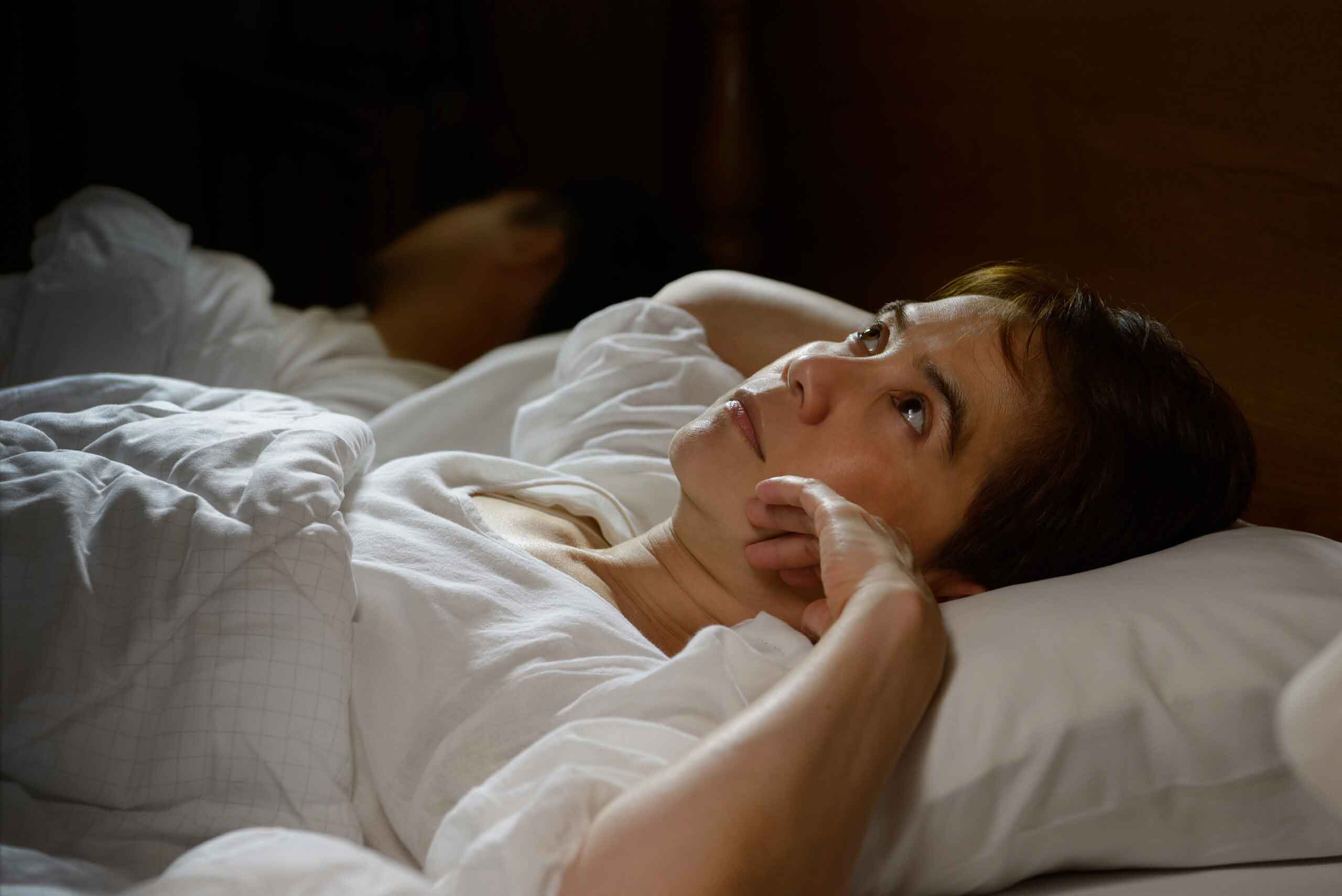What is chronic insomnia disorder?
The official Diagnostic Criteria for Chronic Insomnia Disorder provide an excellent “tick-off-list” to determine what symptoms are present, and if they conform to this difficult-to-treat sleep disturbance. Of course this should be done in collaboration with your general practitioner, since it is a serious illness and needs to be diagnosed and treated properly.
Here is the list of symptoms:
a. The patient reports, or the patient‘s parent or caregiver observes, one or more of the following:
i. Difficulty initiating sleep
ii. Difficulty maintaining sleep
iii. Waking up earlier than desired
iv. Resistance to going to bed on appropriate schedule
v. Difficulty sleeping without parent or caregiver intervention
b. The patient reports, or the patient‘s parent or caregiver observes, one or more of the following related to the nighttime sleep difficulty:
i. Fatigue/malaise
ii. Attention, concentration, or memory impairment
iii. Impaired social, family, occupational, or academic performance
iv. Mood disturbance/irritability
v. Daytime sleepiness
vi. Behavioral problems (e.g., hyperactivity, impulsivity, aggression)
vii. Reduced motivation/energy/initiative
viii. Proneness for errors/accidents
ix. Concerns about or dissatisfaction with sleep
c. The reported sleep/wake complaints cannot be explained purely by inadequate opportunity (that enough time is allotted for sleep) or inadequate circumstances (that the environment is safe, dark, quiet, and comfortable) for sleep.
d. The sleep disturbance and associated daytime symptoms occur at least three times per week.
e. The sleep disturbance and associated daytime symptoms have been present for at least three months.
f. The sleep/wake difficulty is not better explained by another sleep disorder.
Chronic insomnia is not just a sleep disorder; it also has an impact on daytime functioning, as listed above. It constitutes a risk factor for the development of cardio-vascular disease. Furthermore, it is coupled with an increased vulnerability to mental disorders, especially anxiety and depression. Thus, we can hypothesize that insomnia treatment may be a successful strategy to prevent mental disorders.
Theoretical models of insomnia models stress the importance of predisposing, precipitating and perpetuating factors.
a. Predisposing factors: It is assumed that genetic and personality factors, especially perfectionism, play a major role for developing chronic insomnia.
b. Precipitating factors: In many cases, insomnia is triggered by stressful life events — social, professional or family problems.
c. Perpetuating factors: These may include psychophysiological hyperarousal or maladaptive behaviors like late bedtime, daytime napping, or alcohol consumption.
How is chronic insomnia disorder diagnosed?
International guidelines have been established for a careful diagnosis. The European Insomnia Guideline lists the medical history steps that need to be taken:
a. Medical history/diagnosis
i. Former and present somatic disorders (including pain)
ii. Medication, alcohol, nicotine, drugs
iii. Laboratory, thyroid, blood count, Gamma-GT, hepatic and renal values
iv. If necessary EEG, ECG, CT/MRT of the brain
b. Psychiatric/psychological history
i. Former and present mental disorders
ii. Personality factors
iii. Work and partnership situation
iv. Current conflicts
c. Sleep history
i. Triggering factors including trauma
ii. Work time/circadian factors (shift- and night work)
iii. Sleep behavior
iv. History of the sleep disorder
v. Sleep diary
vi. Bed partner anamnesis (periodic leg movements in sleep/respiratory pauses)
d. Actigraphy
i. Use of a wrist-measured activity monitoring device
e. Polysomnography
i. Measuring sleep in the laboratory with the electroencephalogram
This long list of diagnostic efforts is necessary, since chronic insomnia is so persistent and difficult to treat. Chronic insomnia should be taken seriously, especially concerning its long-lasting somatic and mental health consequences. There is a broad data base documenting the prevalence of insomnia disorder (ranging, for example, from about 6% – 20% in European countries).
What are the components of Cognitive Behavioral Therapy for chronic insomnia disorder (CBT-I)?
- Behavioral strategies
a. Sleep restriction: A method aimed at strengthening sleep pressure and stabilizing circadian control of sleep and wakefulness, by decreasing the opportunity to sleep over successive nights. Patients are instructed to restrict their time in bed to match their average total sleep duration, as indicated by self-reports in sleep diaries. The time in bed is then gradually increased until reaching patients’ optimal sleep need. (An alternate method, called sleep compression, consists in gradual constriction of time in bed until reaching the optimal sleep need.)
b. Stimulus control: Several instructions aiming at strengthening the bed as a cue for sleep, weakening it as a cue for activities that might interfere with sleep, and helping the insomniac acquire a consistent sleep rhythm, based on an operant conditioning model:
i. Lie down to go to sleep only when you are sleepy.
ii. Do not use your bed for anything except for sleep and sexual activity.
iii. If you find yourself unable to fall asleep, get up and go to another room. Stay up as long as you wish, and come back to bed when you feel sleepy.
iv. If you still cannot fall asleep, repeat step 3. Do this as often as is necessary throughout the night.
v. Set your alarm and get up at the same time every morning irrespective of how much sleep you got during the night,
vi. Do not nap during daytime.
c. Sleep hygiene education (behavioral/educational): General health instruction about internal and external factors that can influence sleep (for example, sports, light levels, ambient temperature).
d. Relaxation (behavioral/cognitive): A set of methods designed to reduce somatic or cognitive hyperarousal (for example, progressive muscle relaxation, autogenic training, imagery training, meditation).
- Cognitive strategies
a. Cognitive reappraisal: Strategies directed to reduce dysfunctional beliefs, attitudes, concerns, and false beliefs about the cause of insomnia and the inability to sleep.
b. Cognitive control/Worry time: The patient is instructed to sit comfortably in an armchair and write down a list of worries and list of what to do the next day. The rationale of this strategy is to prevent emotionally loaded intrusive thoughts during the sleep-onset period, since all worries have been “already” processed before going to bed.
c. Paradoxical intention: Strategy aimed at reducing the anticipatory anxiety at the time of falling asleep. Patients are instructed to remain still in bed with the eyes closed and to try to keep awake as long as they can. This takes away the responsibility to try to fall asleep, which in turn often leads to falling asleep more quickly.
CBT-I is recommended as first-line treatment for chronic insomnia in adults of any age.
What other treatments are used?
a. Benzodiazepine receptor agonists and sedating antidepressants are effective in the short-term treatment of insomnia (≤ 4 weeks), but long-term treatment is not generally recommended because of low-quality evidence and possible side effects/risks.
b. There is insufficient evidence for antihistamines and antipsychotics (side effects).
c. Melatonin, valerian and other phytotherapeutics show low efficacy.
d. Light therapy and exercise can be useful as adjunct regimes, especially in the elderly and when circadian factors are involved.
e. Complementary and alternative medicine (aroma therapy, acupuncture, food reflexology, homeopathy, music therapy) is not recommended.
Conclusion
Chronic insomnia should not be regarded just as a minor nuisance. It entails serious consequences for somatic and mental health. Proper diagnosis — and differential diagnosis, to rule out alternatives — is essential before any kind of intervention. Circadian factors — such as morning/eveningness and shift work — need to be identified and taken into consideration. At present, CBT-I is considered to be the first-line treatment and gold standard for chronic insomnia. About 60-70% of affected individuals have a good chance for remission, or at least substantial improvement. Medications — especially the widely used benzodiazepines and benzodiazepine-receptor agonists — have their place in the short-term treatment of insomnia, but are considered problematic for long-term treatment because of the risks of abuse and addiction. The greatest challenge for the field now is the dissemination of CBT-I into routine clinical practice, especially primary health care. Stepped care models for insomnia treatment — where a sequence of treatments is specified, depending on failure or success — will begin to incorporate CBT-I, which should help solve the problem of availability.
Dieter Riemann Dr. rer.soc. Dipl. Psych. is Professor for Clinical Psychology and Psychophysiology, and head of the Department for Clinical Psychology & Psychophysiology/Sleep Medicine at the University Psychiatric Clinic in Freiburg Germany, where his special interests are cognitive behavioral therapy for chronic insomnia as well as sleep disorders that lead to major depression.






